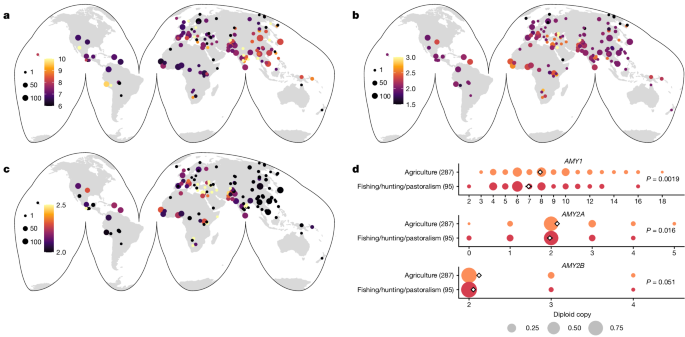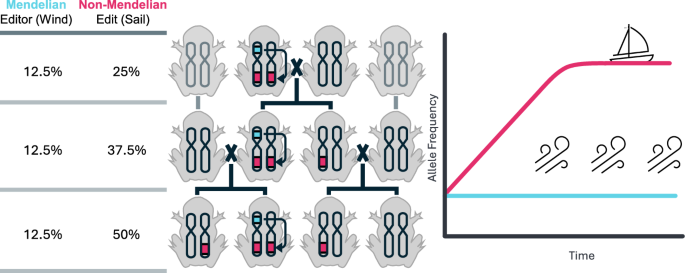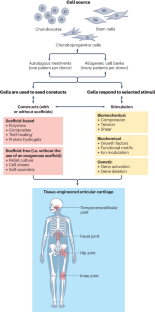2024-09-04 カリフォルニア大学バークレー校(UCB)
<関連情報>
- https://news.berkeley.edu/2024/09/04/agriculture-accelerated-human-genome-evolution-to-capture-energy-from-starchy-foods/
- https://www.nature.com/articles/s41586-024-07911-1
アミラーゼ遺伝子座の構造的多様性を形成する反復進化と選択 Recurrent evolution and selection shape structural diversity at the amylase locus
Davide Bolognini,Alma Halgren,Runyang Nicolas Lou,Alessandro Raveane,Joana L. Rocha,Andrea Guarracino,Nicole Soranzo,Chen-Shan Chin,Erik Garrison & Peter H. Sudmant
Nature Published:04 September 2024
DOI:https://doi.org/10.1038/s41586-024-07911-1

Abstract
The adoption of agriculture triggered a rapid shift towards starch-rich diets in human populations1. Amylase genes facilitate starch digestion, and increased amylase copy number has been observed in some modern human populations with high-starch intake2, although evidence of recent selection is lacking3,4. Here, using 94 long-read haplotype-resolved assemblies and short-read data from approximately 5,600 contemporary and ancient humans, we resolve the diversity and evolutionary history of structural variation at the amylase locus. We find that amylase genes have higher copy numbers in agricultural populations than in fishing, hunting and pastoral populations. We identify 28 distinct amylase structural architectures and demonstrate that nearly identical structures have arisen recurrently on different haplotype backgrounds throughout recent human history. AMY1 and AMY2A genes each underwent multiple duplication/deletion events with mutation rates up to more than 10,000-fold the single-nucleotide polymorphism mutation rate, whereas AMY2B gene duplications share a single origin. Using a pangenome-based approach, we infer structural haplotypes across thousands of humans identifying extensively duplicated haplotypes at higher frequency in modern agricultural populations. Leveraging 533 ancient human genomes, we find that duplication-containing haplotypes (with more gene copies than the ancestral haplotype) have rapidly increased in frequency over the past 12,000 years in West Eurasians, suggestive of positive selection. Together, our study highlights the potential effects of the agricultural revolution on human genomes and the importance of structural variation in human adaptation.


